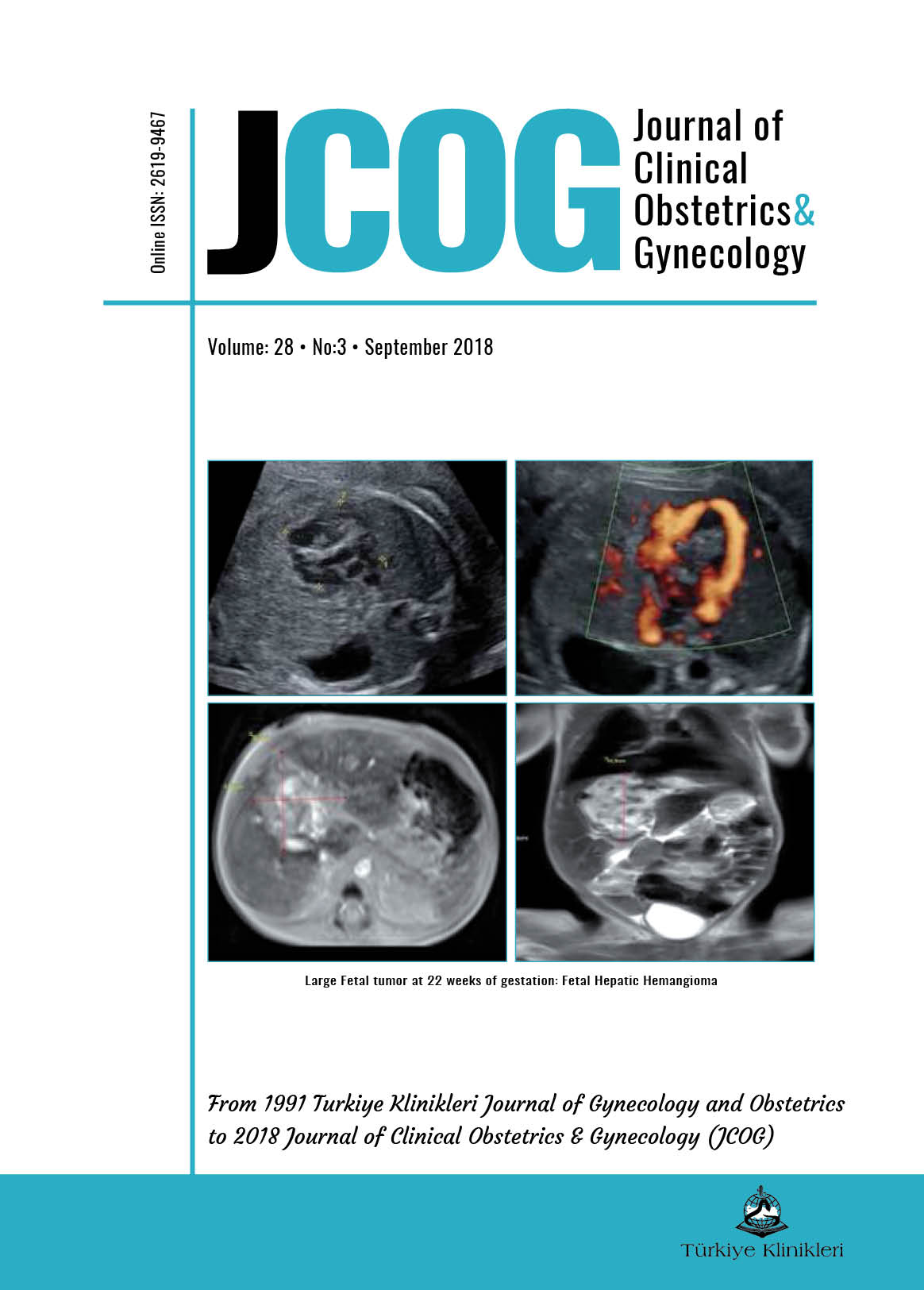Open Access
Peer Reviewed
ORIGINAL RESEARCH
3011 Viewed1517 Downloaded
The Comparison of Physical Activity, Disability, and Quality of Life of PregnantWomen in Different Trimesters
J Clin Obstet Gynecol. 2018;28(3):89-94
DOI: 10.5336/jcog.2018-61545
Article Language: EN
Article Language: EN
Copyright Ⓒ 2025 by Türkiye Klinikleri. This is an open access article under the CC BY-NC-ND license (http://creativecommons.org/licenses/by-nc-nd/4.0/)
ABSTRACT
Objective: The purpose of this study was to compare the physical activity, disability, and quality of life in pregnant women in different trimesters.Material and Methods: This was a retrospective cohort study and a total of 91 pregnant women (first trimester n=20, second trimester n= 34, third trimester n=37) were enrolled. The physical activity levels were evaluated with the International Physical Activity Questionnaire; the disability was evaluated with the Oswestry Low Back Pain Questionnaire, and the quality of life levels was determined with the Short Form-36 questionnaire. Results: The demographic features of the pregnant women were similar in different trimesters (p>.05). The comparison of their physical activity levels in terms of trimesters, the level of moderate and vigorous physical activities, and the activity level of walking showed no difference (p>.05). The total physical activity level in the second trimester was higher than in the first trimester (p=.048); the level of disability due to low back pain was significantly higher in the third trimester than other trimesters (p=.003); and the physical function parameter of the quality of life scale was significantly lower in the third trimester compared to the first and the second ones (p=.001). However, there were no significant differences in the other parameters of the quality of life (p>.05). Conclusion: The levels of physical activity, physical functioning and disability varied in different trimesters. It can be stated that the progress of the pregnancy decreases physical function and triggers disability due to low back pain; however, the change in the level of physical activity is related to the adaptation to pregnancy and not to gestational age.
Objective: The purpose of this study was to compare the physical activity, disability, and quality of life in pregnant women in different trimesters.Material and Methods: This was a retrospective cohort study and a total of 91 pregnant women (first trimester n=20, second trimester n= 34, third trimester n=37) were enrolled. The physical activity levels were evaluated with the International Physical Activity Questionnaire; the disability was evaluated with the Oswestry Low Back Pain Questionnaire, and the quality of life levels was determined with the Short Form-36 questionnaire. Results: The demographic features of the pregnant women were similar in different trimesters (p>.05). The comparison of their physical activity levels in terms of trimesters, the level of moderate and vigorous physical activities, and the activity level of walking showed no difference (p>.05). The total physical activity level in the second trimester was higher than in the first trimester (p=.048); the level of disability due to low back pain was significantly higher in the third trimester than other trimesters (p=.003); and the physical function parameter of the quality of life scale was significantly lower in the third trimester compared to the first and the second ones (p=.001). However, there were no significant differences in the other parameters of the quality of life (p>.05). Conclusion: The levels of physical activity, physical functioning and disability varied in different trimesters. It can be stated that the progress of the pregnancy decreases physical function and triggers disability due to low back pain; however, the change in the level of physical activity is related to the adaptation to pregnancy and not to gestational age.
MENU
POPULAR ARTICLES
MOST DOWNLOADED ARTICLES





This journal is licensed under a Creative Commons Attribution-NonCommercial-NoDerivatives 4.0 International License.










